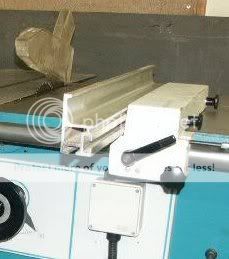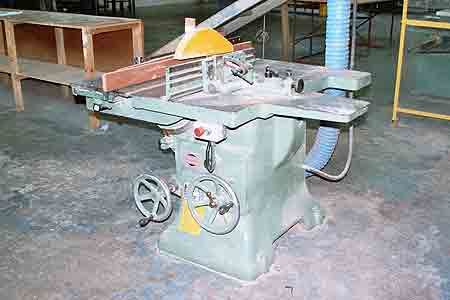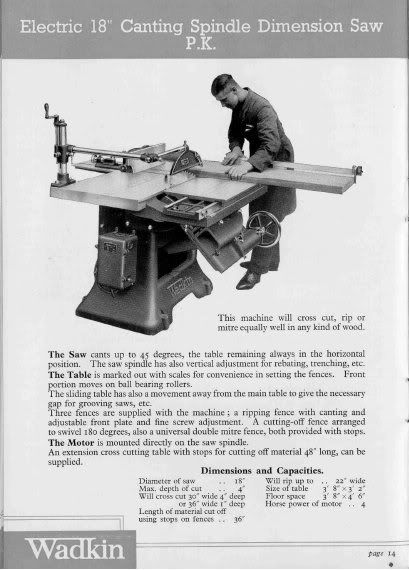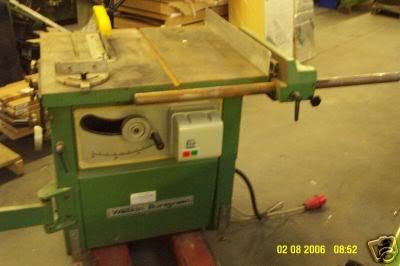DaveL
Established Member
I doubt that it has a brake, if it does it will be one that was fitted after the machine was sold.Tusses":37eu4ns5 said:I think my Wadkin (1961 single phase) must have had a brake fitted. It takes about 10 secs to slow down and there is a click from the motor as it spins up, and a click as it slows down ?
I think the click you can hear will be the starter flicking over as the revs rise and dropping back when it runs down. My Wadkin, a bit newer than yours was 3 phase, no brake. I fitted a single phase motor, still with no brake. With a standard 10" blade fitted it takes just over the 10 seconds to stop, I have not timed it when the dado head is fitted, but it will be longer.
I have fitted a stop button on a lead, that lives on the floor so I can stop the saw with my foot, I don't have to move my hands at the end of the cut, just wait for the blade to come to a standstill.





































